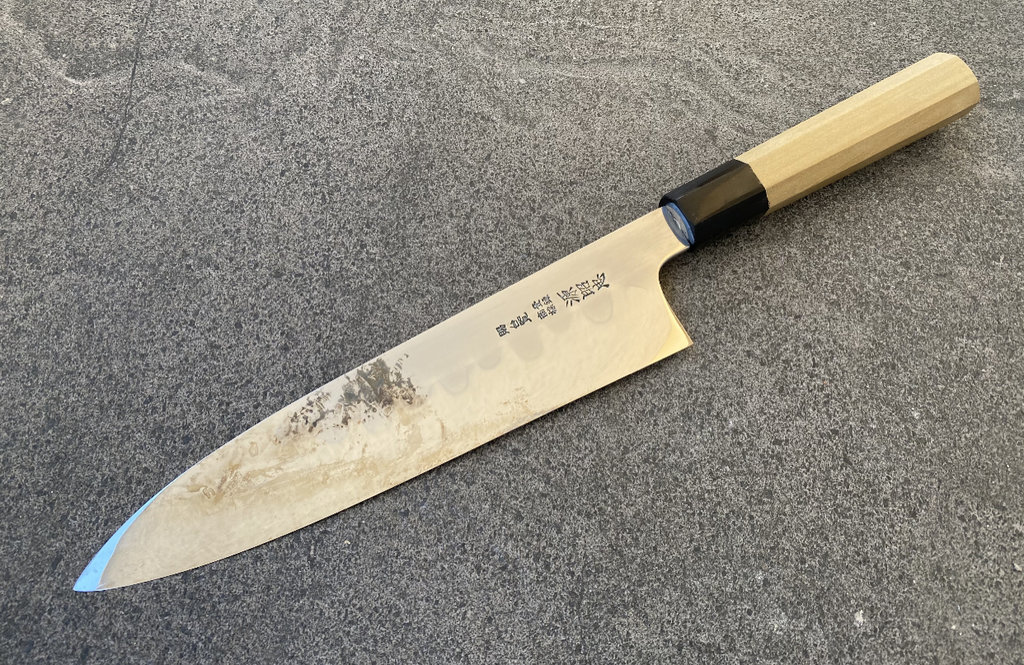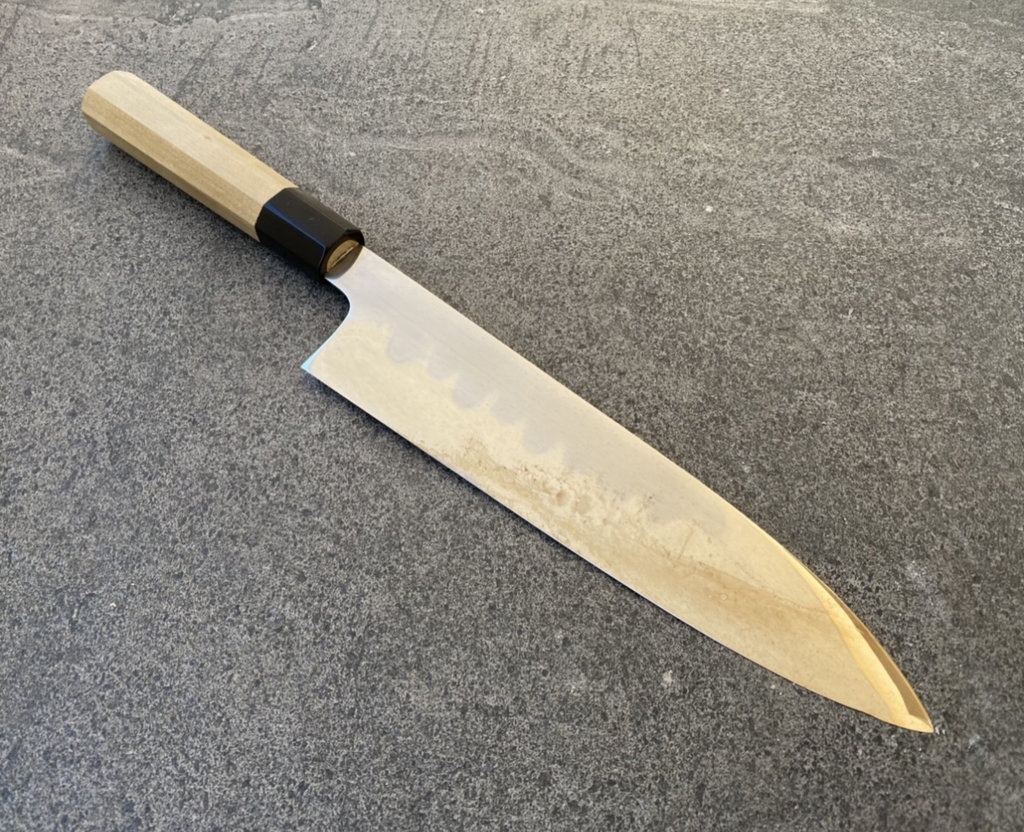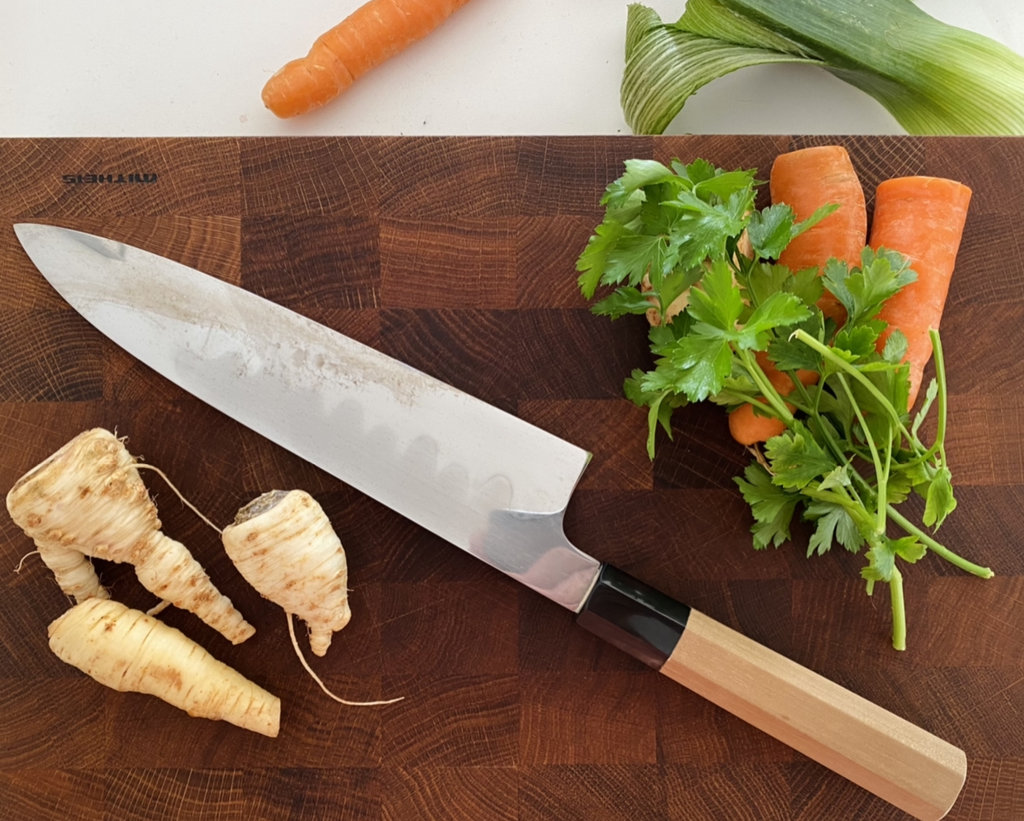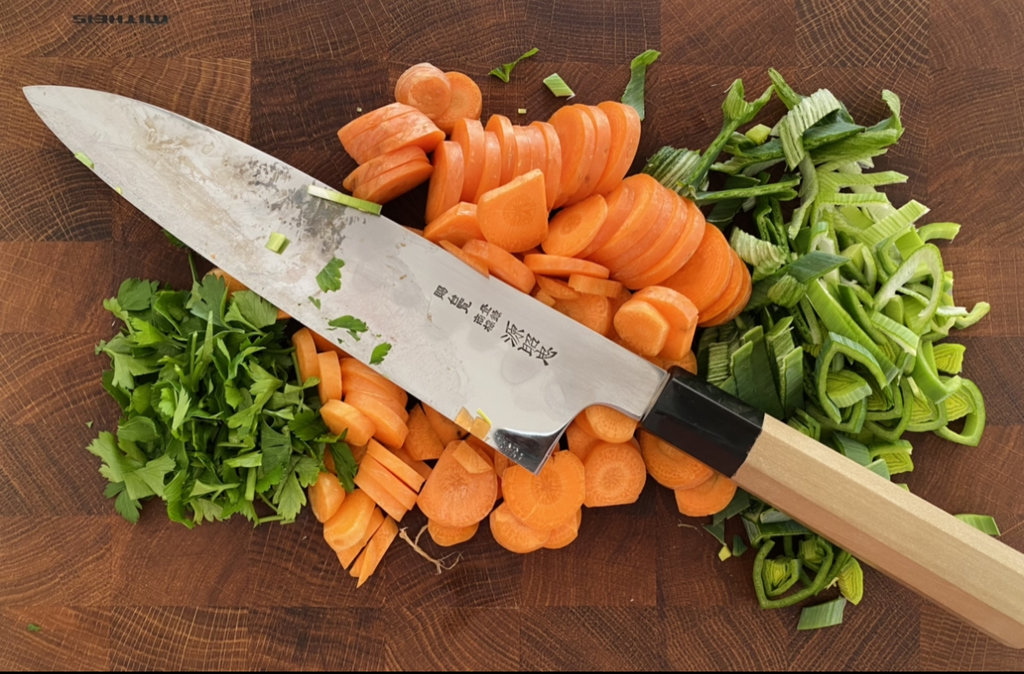A recent BST post and ensuing discussion focused on the steels and quenching methods MIzuno uses.
Starting a new thread here for discussion.
I picked up a white #2 Honyaki gyuto in Sakai in October. He definitely told me it was water quenched.
Other thoughts and experiences?
Starting a new thread here for discussion.
I picked up a white #2 Honyaki gyuto in Sakai in October. He definitely told me it was water quenched.
Other thoughts and experiences?









